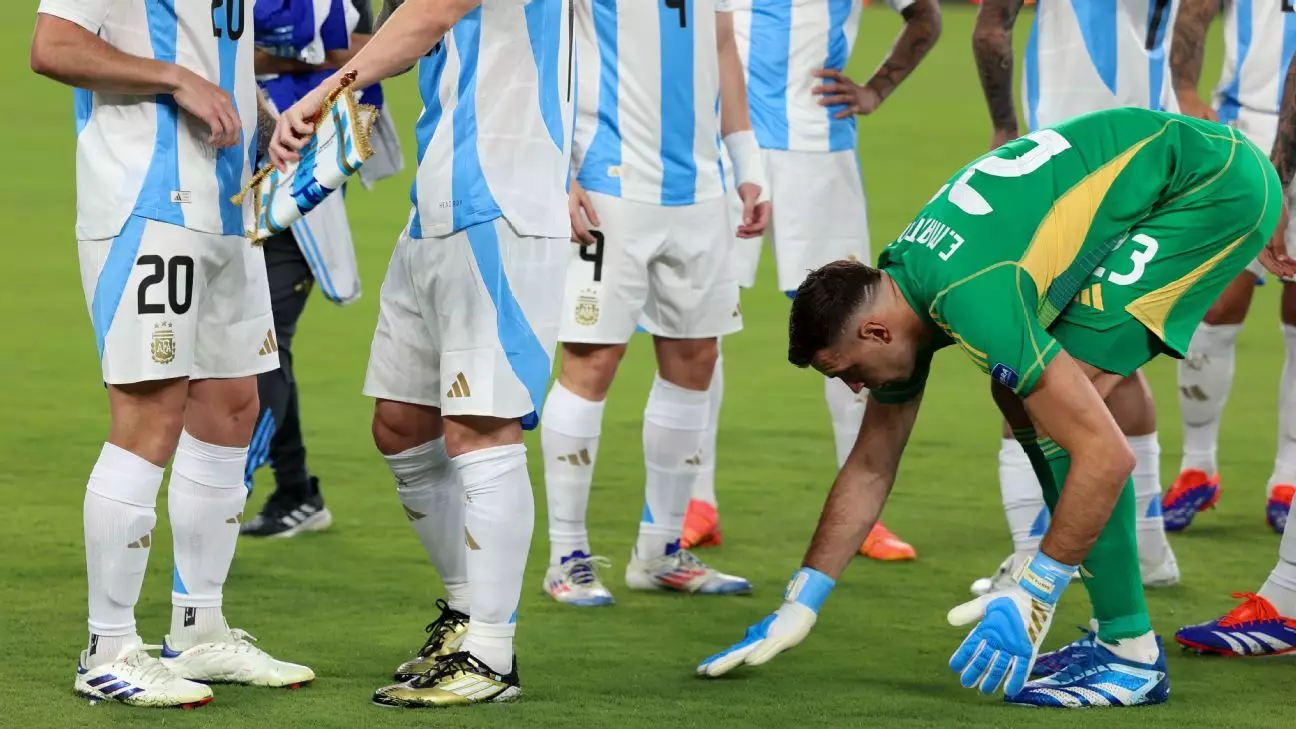The 2024 Copa América kicked off to a celebratory start on June 20 with Argentina’s victory over Canada. However, the joy of the game quickly faded as players from various teams began voicing their frustrations about the quality of the playing fields provided by CONMEBOL. Argentina’s coach, Lionel Scaloni, led the charge in criticizing the last-minute preparation of the fields, questioning why the South American football confederation chose to make changes just 48 hours before the match. He expressed his displeasure, stating that the field was not suitable for the caliber of players participating in the tournament. Other players, such as goalkeeper Emiliano Martínez and United States midfielder Weston McKennie, echoed Scaloni’s sentiments, highlighting the challenges they faced while playing on uneven and patchy grass.
The dissatisfaction with the field conditions was not limited to Argentina’s team. Players and managers from different countries, such as Peru, Brazil, Canada, Colombia, and Chile, also raised concerns about the quality of the playing surfaces. The fact that some stadiums had artificial turf while others had natural grass added to the inconsistency and raised questions about the fairness of the tournament. Even though CONMEBOL had implemented rules to standardize the field conditions, the adjustments made were not enough to address the issues faced by the players.
CONMEBOL had announced the stadiums selected to host the Copa América matches months in advance, but the quality of the fields remained a contentious issue throughout the tournament. The utilization of artificial turf in some venues, along with the last-minute modifications to meet the required dimensions, added to the challenges faced by the teams. Despite efforts to ensure uniformity and fairness, the varying conditions of the playing surfaces across different stadiums created an inconsistent playing experience for the players. The reliance on temporary grass and the lack of natural growth raised concerns about the safety and quality of the fields.
As the Copa América venues are set to host matches for the 2026 World Cup, concerns over the field conditions have raised alarms for the upcoming international tournament. FIFA plans to implement new regulations to address the disparity in playing experiences, particularly in stadiums with artificial turf. The introduction of hybrid fields, combining artificial fibers with natural grass, aims to create a consistent and sturdy playing surface for players. The goal is to ensure that all fields meet the same standards of playability, regardless of the climate or stadium infrastructure.
The field conditions at the 2024 Copa América have highlighted the importance of maintaining high-quality playing surfaces for international tournaments. The concerns raised by players, coaches, and officials underscore the need for standardized field conditions to provide a fair and safe playing environment for all participants. As preparations continue for the 2026 World Cup, it is crucial for CONMEBOL and FIFA to prioritize the quality of the fields to ensure a successful and enjoyable tournament for players and fans alike.

Leave a Reply